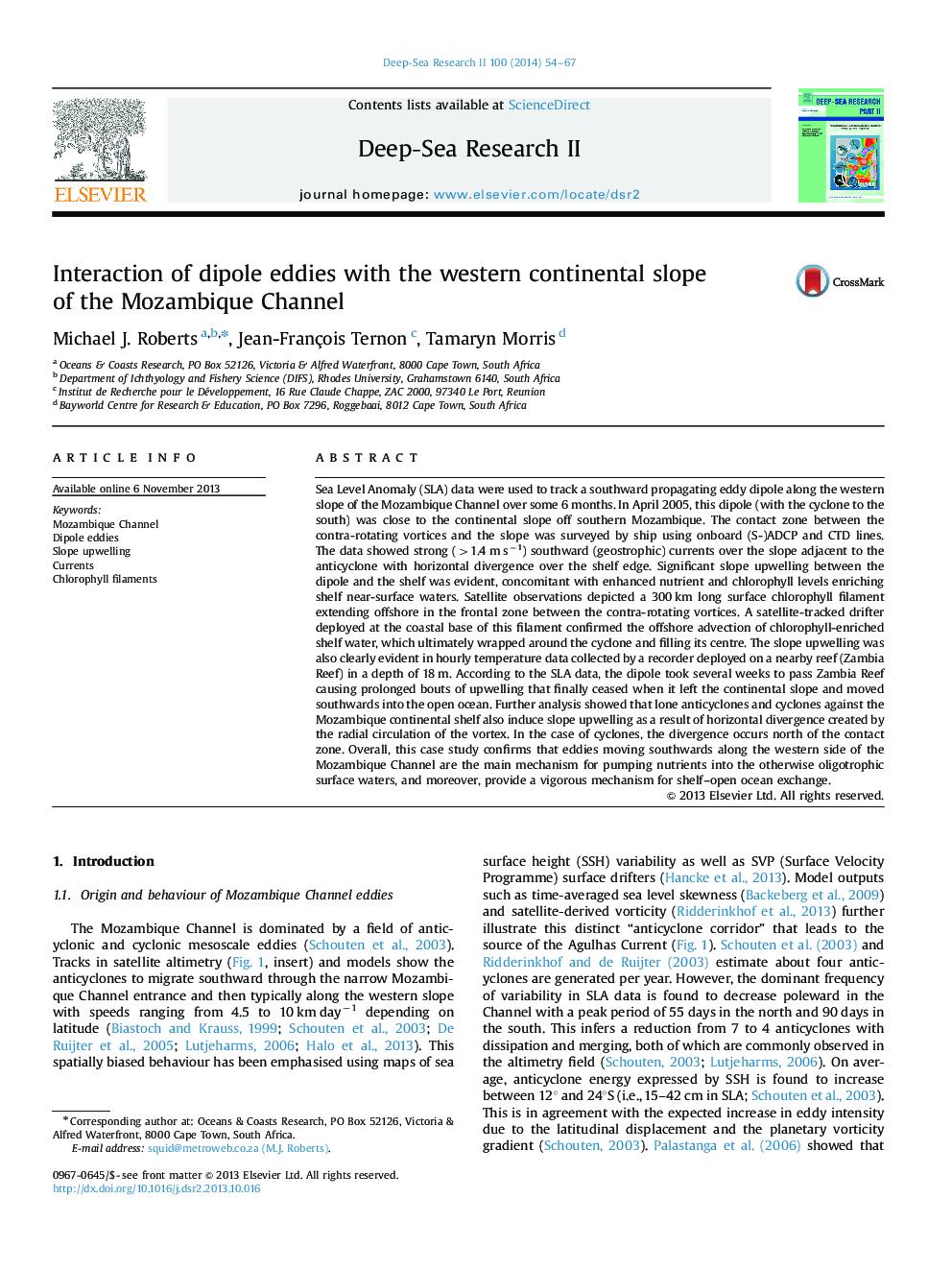| کد مقاله | کد نشریه | سال انتشار | مقاله انگلیسی | نسخه تمام متن |
|---|---|---|---|---|
| 4536427 | 1626440 | 2014 | 14 صفحه PDF | دانلود رایگان |
Sea Level Anomaly (SLA) data were used to track a southward propagating eddy dipole along the western slope of the Mozambique Channel over some 6 months. In April 2005, this dipole (with the cyclone to the south) was close to the continental slope off southern Mozambique. The contact zone between the contra-rotating vortices and the slope was surveyed by ship using onboard (S-)ADCP and CTD lines. The data showed strong (>1.4 m s−1) southward (geostrophic) currents over the slope adjacent to the anticyclone with horizontal divergence over the shelf edge. Significant slope upwelling between the dipole and the shelf was evident, concomitant with enhanced nutrient and chlorophyll levels enriching shelf near-surface waters. Satellite observations depicted a 300 km long surface chlorophyll filament extending offshore in the frontal zone between the contra-rotating vortices. A satellite-tracked drifter deployed at the coastal base of this filament confirmed the offshore advection of chlorophyll-enriched shelf water, which ultimately wrapped around the cyclone and filling its centre. The slope upwelling was also clearly evident in hourly temperature data collected by a recorder deployed on a nearby reef (Zambia Reef) in a depth of 18 m. According to the SLA data, the dipole took several weeks to pass Zambia Reef causing prolonged bouts of upwelling that finally ceased when it left the continental slope and moved southwards into the open ocean. Further analysis showed that lone anticyclones and cyclones against the Mozambique continental shelf also induce slope upwelling as a result of horizontal divergence created by the radial circulation of the vortex. In the case of cyclones, the divergence occurs north of the contact zone. Overall, this case study confirms that eddies moving southwards along the western side of the Mozambique Channel are the main mechanism for pumping nutrients into the otherwise oligotrophic surface waters, and moreover, provide a vigorous mechanism for shelf–open ocean exchange.
Journal: Deep Sea Research Part II: Topical Studies in Oceanography - Volume 100, February 2014, Pages 54–67
